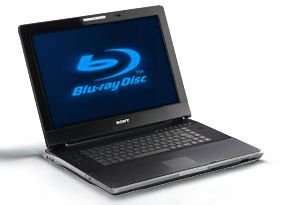12 free downloads and tips for your laptop
Got a problem? Our notebook problem solvers can help

Our colleagues over at What Laptop are in the middle of posting useful tips and Q&As for solving all sorts of common notebook and netbook problems, for beginner to more experienced users, so we've collated 12 of the best for your reading pleasure.
1. Clean and speed up your laptop OS
It's all too easy to fill your laptop's hard drive with files and applications, and the more software you add the slower it's likely to run. Traces of programs are even left behind after you've uninstalled them, potentially slowing your laptop further. Thankfully, it's easy to spruce things up using an application called CCleaner.
Read on to discover how to download and use it.
2. Protect your laptop's data
Due to the portable nature of laptops and netbooks, the data it holds is unfortunately always at risk of both theft and loss. While it's impossible to keep your laptop 100% safe at all times, you can ensure that your data is kept safe, even if your laptop is stolen or lost, by encrypting it. One particularly easy free solution you can use is TrueCrypt.
Read on to discover how to download and use it.
Get daily insight, inspiration and deals in your inbox
Get the hottest deals available in your inbox plus news, reviews, opinion, analysis and more from the TechRadar team.
3. Help your laptop run cooler
While the fantastic mobility of laptops makes them great for working on the sofa or on in bed, it's always important to make sure your laptop has adequate ventilation, to avoid overheating.
Read on to find out how to keep ventilation clear.
4. Help your battery live longer
When running a laptop at home from mains power, many users leave the battery plugged in at all times, so that it's always fully-charged for when they want to hit the road.
Find out why this is a bad idea and what you should do instead.
5. Change your netbook screen font size
While the compact size of netbooks makes them ideal for regular travel use, their tiny screens can often be awkward to use, when reading multiple pages of text or browsing the internet.
Find out how to change default font sizes.
6. Speed your laptop up
Most laptops that are brand new come with loads of software pre-installed – a lot of it trial-only, and many applications that you may not even use. The more software you install, the longer it'll take your laptop to start up, but with Autoruns, a free third-party app, it's a simple process to speed things up.
Read on to discover how to download and use it.
7. Clean a dirty laptop
The first thing you need to do is shut it down and unplug the power lead. It may be wise to remove the battery as well. To clean the chassis, a damp, but not wet cloth should be enough to remove most dirt and grime.
Read on for how to clean the keyboard and screen.
8. Clone your laptop's drive
"I have a laptop that's three years old and the hard drive is rapidly filling up. I would like to fit a higher capacity drive and I've looked at various online retailers and know the type of drive I need to buy. However, as there is a lot of data on it, is there any way to transfer the contents of my new hard drive directly onto the new one, without reinstalling Windows?"
There certainly is. Read on for how.
9. How to upgrade your notebook's memory
Your laptop manual will normally tell you how much memory you can fit, and what type and speed you need to use. However, if you don't have that to hand, a very useful tool is Crucial's memory advisor, at www.crucial.com/uk.
Find out more about memory upgrading.
10. How to get spare laptop parts
"The DVD drive on my Asus laptop has stopped working and it no longer shows up in My Computer. It's been troublesome for a while and I think it's finally given up the ghost. Is there anyway to replace the drive, or do I need to get one from Asus?"
Read What Laptop's advice on where to get replacement drives
11. Recover files from a damaged hard drive
Hard drives can fail without warning, although you'll normally receive some advanced notice, usually in the form or strange noises, or problems when reading or writing files. You can try downloading a program from www.ontrackdatarecovery.co.uk, called Verifile, which will tell you if any of your files are actually recoverable.
12. Use RAID drives in your laptop
"I have bought a new Acer Laptop, which has two 320GB hard drives. When I enter the BIOS and create a RAID set and set it to striping I see the two drives as 320GB each. However, when I then install Windows Vista, it shows only one drive with a capacity of about 700GB. Why don't I see two drives, and can I use a partitioning program to split this large drive into two?"
Read on for What Laptop's solution.
Thanks to What Laptop - head over to whatlaptop.co.uk for daily laptop previews and info.
The TechRadar hive mind. The Megazord. The Voltron. When our powers combine, we become 'TECHRADAR STAFF'. You'll usually see this author name when the entire team has collaborated on a project or an article, whether that's a run-down ranking of our favorite Marvel films, or a round-up of all the coolest things we've collectively seen at annual tech shows like CES and MWC. We are one.
Most Popular


